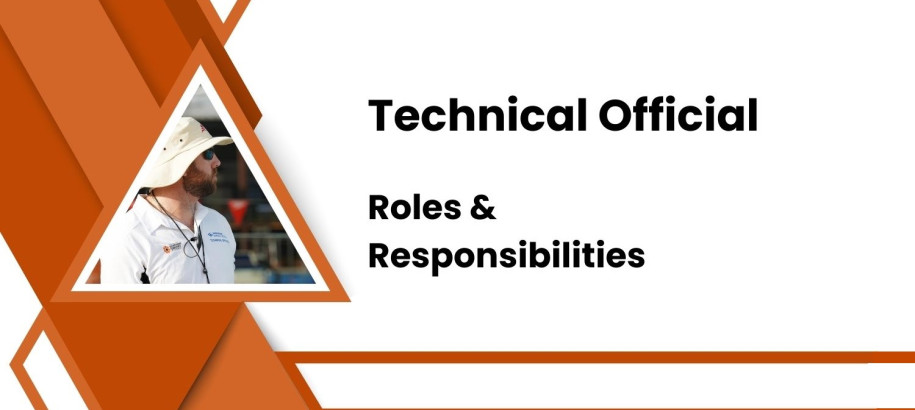
There are many positions that Technical Officials undertake at swimming meets, which means there is an abundance of variety for those wanting to get a bit closer to the action and officiate at events. These roles are outlined below.
Technical Official Roles
- Timekeeping
- Check Starter
- Inspector of Turns
- Judge of Stroke
- Meet Manager Operator
- AOE and SAT Operator
- Control Room Supervisor
- Starter
- Referee
- Technical Manager
A Timekeeper takes the time of swimmers in their assigned lane out on pool deck using either a stopwatch (manual timing) or a plunger (semi-automatic timing). If an automatic timing system isn’t available three Timekeepers are required per lane. Where this isn’t possible, as many Timekeepers per lane is always preferred.
Timekeeping is an important role to ensure each swimmer gets a time for their swim, even when automatic timing systems (touchpads) are used.
A Chief Timekeeper supervises all other Timekeepers and assigns them to lanes, as required.
The check starter role has changed recently with the introduction of self marshalling.
A Check Starter can be positioned on within the self marshalling zone, or on pool deck. The main role of the check starter is to alert the swimmers in the self marshalling zone as to what heat is required to move forward and position themselves behind the blocks. It is then the role of the check starter to have a look at the swimmer caps to ensure they line up with the program to minimise the possibility of swimmers being in the incorrect lane.
Check starters will also have a program with them and assist in any swimmer enquiries regarding their lane and heat allocations.
In large state and national meets check starters also double up as marshals for the finalists - checking off swimmers names and alerting the technical manager / referee of any missing swimmers.
An Inspector of Turns is positioned at either end on pool deck to ensure that swimmers comply with the relevant rules when starting/finishing the race and turning between laps. At a National or some State meets, there are more Inspector of Turns than every other position due to the need to fill each lane at both ends of the pool, to ensure equity for all swimmers.
The Chief Inspector of Turns is responsible for supervising all Inspector of Turns, providing backup and reporting to the referee that an IOT has seen a possible infraction and is on their way to report it.
Most importantly, Inspector of Turns don't disqualify swimmers, they only report possible infractions to the referee and the referee decides whether to disqualify the swimmer.
A Judge of Stroke walks up and down the side of the pool, following the swimmers, to ensure that the rules for the stroke are being observed. They also assist the Inspector of Turns at each end of the pool, observing turns and finishes.
The Judge of Strokes positioned closest to the referee and starter, also operates as a backup referee, in case the referee is called off pool deck for any reason. They are normally the more experienced officials.
The Meet Manager Operator ensures all results throughout the meet are compiled and recorded accurately by the Meet Manager software. They are responsible for ensuring all swimmers have a recorded result, that any disqualification is recorded and results are printed according to the meet rules.
At some state and all National Level Meets, there are 2 Meet Manager operators, with the most experienced being the Chief Recorder. This role ensures that any finals are recorded and distributed correctly for the meet, as well as other Meet Manager duties.
The Automatic Officiating Equipment (AOE) or Semi-Automatic Timing (SAT) Operators are positioned in the control room, monitoring the Automatic Officiating Equipment (AOE) or Semi-Automatic Timing Equipment (SAT) and playing an important role in ensuring the times and places are accurately captured for each swimmer.
This information comes in from the pool via the touchpads and timekeepers, when they are using automated timekeeping devices. These results are quickly crosschecked for accuracy before being sent to the Meet Manager.
The control room supervisor oversees all activities in the control room, signing off on each race result, ensuring disqualifications are recorded and announced correctly, advise the Technical Manager of any issues arising from the results, including the possible requirement of a swim-off etc.
For National Meets, where overhead timing systems are used to ensure race accuracy, the control room supervisor also oversees this and highlights when this technology is required.
For smaller meets, the Control Room Supervisor role is sometimes done by the AOE / SAT Operator.
A Starter is positioned on pool deck and has full control over the swimmers, from the time the referee hands over until the start of the race. A Starter signals swimmers by saying, ‘take your marks’ and then by using a starting system to begin the race, which usually sounds as a loud beep or horn.
There are three Starter levels of accreditation:
Level 1 Starter – Club/Region Competitions;
Level 2 Starter – State Competitions and below;
Level 3 Starter – National Competitions and below;
A Referee is positioned on pool deck and is responsible for all swimmers and officials, ensuring all swimming and competition rules are followed and makes important decisions regarding race conditions. A Referee will use their whistle to a variety of signals to swimmers, officials and spectators.
There are three Referee levels of accreditation:
Level 1 Referee – Club/Region Competitions;
Level 2 Referee – State Competitions and below;
Level 3 Referee – National Competitions and below;
Some Referees may also choose to complete their ‘Referee – Multi Class’ accreditation.
The Technical Manager oversees the meet and all other Technical Officials; they are responsible for ensuring the meet is run in a fair manner.
For all meets in the Northern Territory, the Technical Manager is Kate Reynolds.



